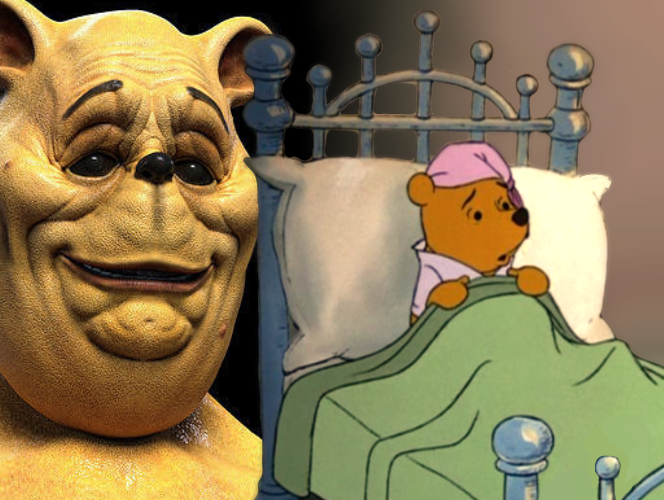The Dark Side of Winnie the Pooh
Winnie the Pooh: Blood and Honey
February 23, 2023
Copyright laws state that publications created before 1978 expire and become public domain after exactly 95 years. Original 1926 novel, Winnie the Pooh by A. A. Milne features Winnie the Pooh, Christopher Robin, Piglet and Eyeore, moreover, as of October 2022 they are all 95 years old. Not even five months later, a man by the name of Rhys Waterfeild, little known director of works such as Dinosaur Hotel and Easter Killing unveiled the now notorious trailer for Winnie the Pooh: Blood and Honey. Described as a slasher-horror-comedy, Blood and Honey was bred for infamy in its use of such a beloved children’s series and the response is just as expected. Some were infinitely excited for the bizarre concept while others were horrified by their lovable bear’s appearance as a not-so-huggable serial killer.
After the release in theaters, the general consensus seems to be that the film is a so-bad-it’s-good watch, instead of laughing at the intended jokes, audiences are cackling at the absurdity of the movie itself. Although it comes as no surprise that the “Winnie the Pooh horror movie” is silly at points, Waterfeild stated this as a intended theme in his interview with Variety, “When you try and do a film like this, and it’s a really wacky concept, it’s very easy to go down a route where nothing is scary and it’s just really ridiculous and really, like, stupid. And we wanted to go between the two.” Objectively bad or not, there are a few, emphasis on few, enjoyable aspects of the feature, however ruined by other factors.
For one, the masks made for both Piglet and Winnie the Pooh are legitimately well-made, showing that a scary character design doesn’t have to rely on worn out tropes of pale skin or big mouths, and a testament to how well this movie could have been in the right hands. However, because of the low budget and poor planning, the slashers can’t express their emotions with the one mask for each. One may think this could be an intriguing take on a Jason Voorhees-esque killer but the setup of these being the real animals viewers are familiar with gone feral falls flat without further exploration. This lack of emotion doesn’t make sense especially as they appear more human than animal, wearing flannels and overalls. Unlike the masks they are given, their motive for murder is entirely based on emotion from the suspected abandonment by Christopher Robin.
The downfall of this film however is not the cinematography or graphics but quite simply the story, despite the compelling idea of childhood “imaginary” friends becoming angry after their children meet maturity, how the narrative plays out seems rushed and cliche. Trading potential substance for pretty girls being killed in bikinis ravenous homicide is spread to a multitude of hashed out characters for seemingly no reason other than to feed into slasher tropes drained of any originality. Overall, the film was disappointing and relied on the ludicrous concept of “Winnie the Pooh slasher” too heavily, garnering little substance to the plot, let alone the message. In summary, Winnie the Pooh: Blood and Honey was a let down for horror fanatics, but movie goers can still have a good time when watching purely for irony. No matter the absurdity, Blood and Honey is still a commercial success with over 1 million in the box office, that being if you ignore the 9% on Rotten Tomatoes. Perhaps in the next movie Waterfield has proposed, a Peter Pan horror movie, Peter Pan: Neverland Nightmare will take criticism to heart, but based on the profit margins, probably not.


